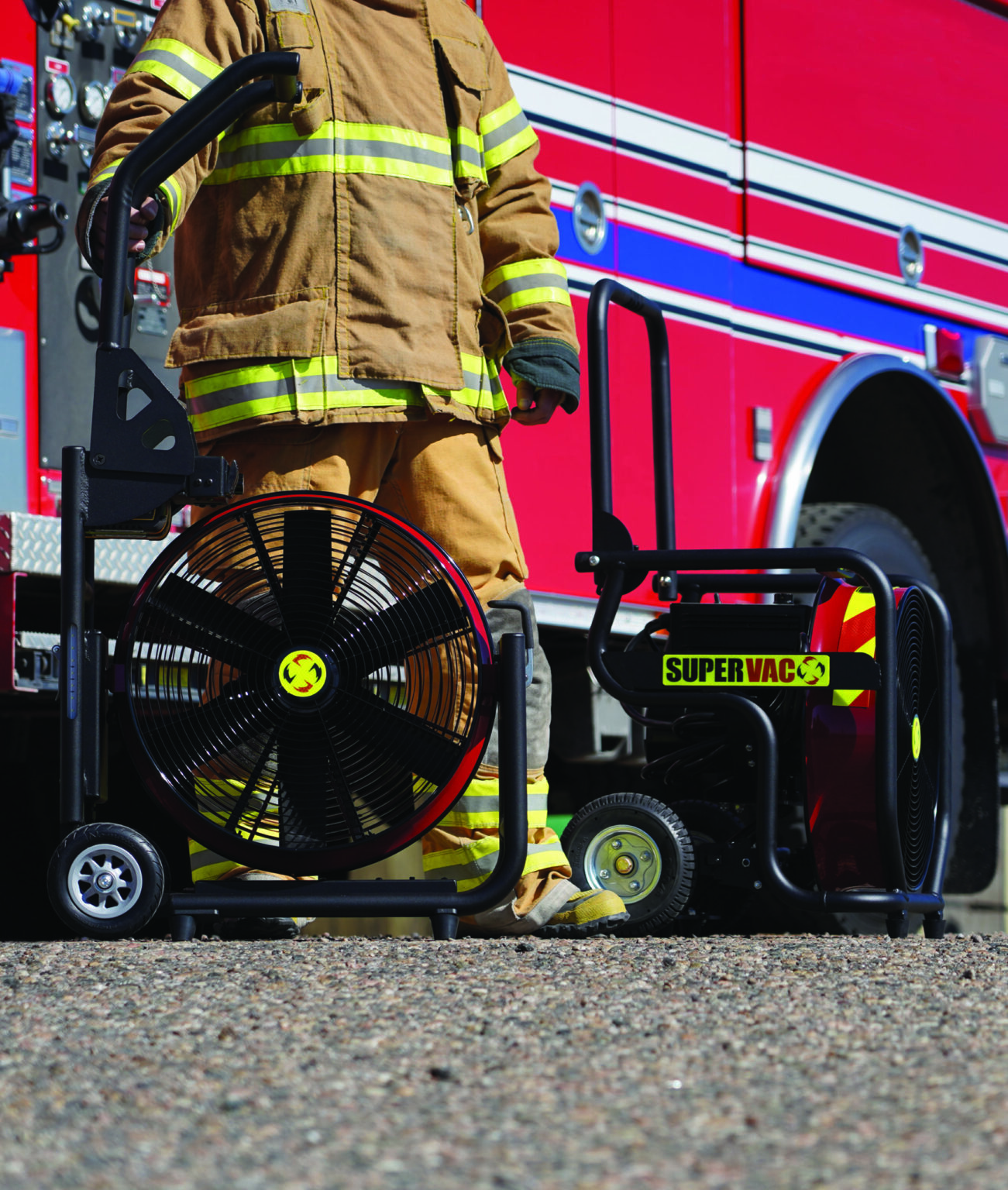Exclusive: Reasons to jump on the battery bandwagon
- December 6, 2021
- 10:04 am


Iain Hoey
Share this content
As the movement towards battery powered equipment continues, there are a number of benefits to switching to battery technology
Battery-powered. Aside from the word carcinogen, this phrase has become the hottest buzzword in the fire industry. With so many manufacturers racing to introduce battery-powered innovations to the market, everyone might as well be running around the fireground in pink bunny suits beating their drums to the tune of long-lasting battery power. And rightfully so. The industry has made great strides in evolving and leveraging battery technology.
Only a few years ago, departments shied away from batteries. Not only were these proprietary behemoth batteries hard to source, but their power density and raw power made crews less than eager to trade in their gas- and hydraulic-powered tools. But with the advancements of lithium-ion batteries and the revolutionary products that manufacturers have brought to market in that timeframe, it’s now time to jump on the battery bandwagon. Here are five reasons to consider the battery swap.
Lithium-ion advancements
In the last few years, lithium-ion (Li-ion) batteries have advanced drastically. Not only do these batteries tout one of the highest energy densities (compared to other rechargeable battery technologies), but the Li-ion landscape keeps changing.
The foundational building block of these batteries is the lithium-ion cell that makes up the battery pack. Packs are made up of series and parallel connections to reach optimal voltages and amp-hour ratings. The common cell used to be an 18650 (18 mm in diameter x 65 mm tall) cylindrical cell, but now 21700 (21 x 70 mm) and 26650 (26 x 65 mm) cells are making headway.
These numbers simply refer to the physical size of the cell, and while the explanation is simple, the difference is profound. An extra 5 mm of length and 3 mm of diameter gives the battery cell 47% more volume, and with more capacity comes more runtime. Today’s 21700 power tools deliver 50-100% longer runtimes than the 18650 tools, and all the while, battery manufacturers have found better ways to improve their packs’ cooling capabilities.
In short, these batteries are simply much more reliable, giving departments more confidence in relying on this power source across rescue tools, PPV fans and even fire trucks.
Built-in redundancy
To help in the adoption of battery technology, manufacturers also realised departments would be more confident in their products if they ran off back-up power sources, like built-in shorepower. Take for instance today’s battery powered PPVs. Some of the industry’s leading fan manufacturers have equipped their battery-powered fans with a standard shorepower feature — not because the runtimes of these PPVs can’t get the job done but because redundancy has a place on the fireground, especially when lives are at state. Fortunately, manufacturers have recognised this.
Universal battery platforms
And then of course, there’s always the backup to the backup — universal battery systems that provide an arsenal of firefighter tools that run off the same battery platform. Take for instance the evolution of the Super Vac Valor, one of the most popular battery fans to hit the market. In 2018, the ventilation leader introduced a new battery PPV that was powered by DeWalt FLEXVOLT batteries. Not only could departments utilise the batteries from their other DeWalt and AMKUS rescue tools, but Super Vac made this introduction with the goal that these batteries could be more easily sourced than proprietary batteries. Talk about convenience when you can pick up spare, affordable batteries at the local hardware store. Since that well-received introduction, Super Vac has added models that are compatible with other popular batteries, like Milwaukee’s M18 and M28 battery platforms. In fact, this trend has begun to reshape the way departments spec their trucks. It’s not uncommon to see whole apparatus compartments devoted to the storage of battery tools, along with built-in charging stations.
Rapid-deployment tools
As we list the reasons that battery technology has gained in popularity, we would be remiss not to mention the ease that comes with deploying battery tools. Gone are the days of power cords and hydraulic hoses and flood engines. And let’s not forget expensive generators that take up valuable room in already-compact vehicles. But battery naysayers might be quick to point out that battery tools deliver less power, force, airflow and (again) runtimes. But as they hang onto these big numbers, lithium lovers are benefitting from lighter, more compact, push-of-a-button tools that are beginning to tout numbers comparable to their counterparts.
Let’s go back to that Super Vac battery PPV. At 580 mm x 595 mm x 305 mm, Super Vac’s smallest battery fan — a 16” variable-speed model — weighs 20 kgs, making it light enough for one person to carry. Meanwhile, the 18” and 20” variations (also lightweight) feature built-in wheels and handle for added maneuverability. It’s features like these that are making battery tools even easier to deploy.
Goodbye bad carcinogens
Remember how we mentioned carcinogens at the beginning of this article? It’s important to look at the impact firefighters tools have on their environment and the crews using them. Take for instance a petrol-powered fan. While these fans can offer high airflows, they produce products of combustion that can adversely affect air quality even when catalytic converters are used. Even after the fact, storing these fans can contaminate apparatus compartments with their fumes. And with the industry’s shift toward protecting firefighters, eliminating bad carcinogens has become a priority. By using emission-free ventilation, the worry of CO contamination is eliminated for residents returning to a structure following smoke removal.
So, in short, we’ve come full circle to the phrase battery-powered and the warm, fuzzy feelings departments now have for the technology. It’s time to break out the pink bunny suit and beat that battery drum.



